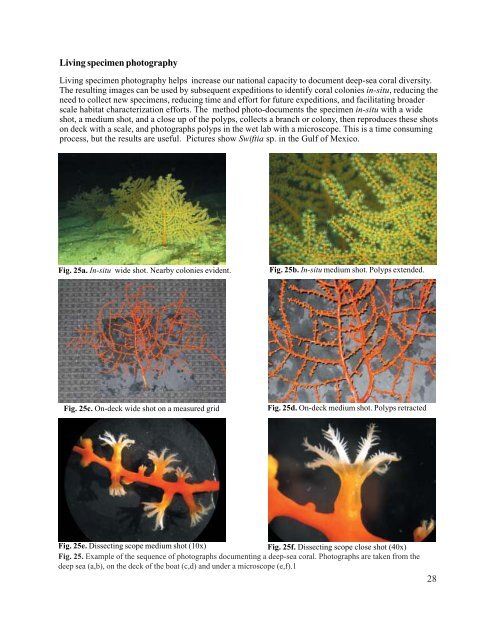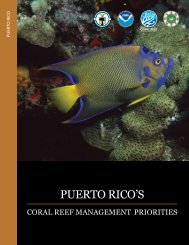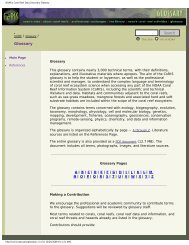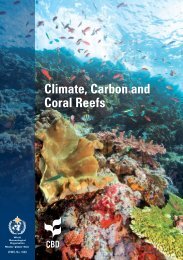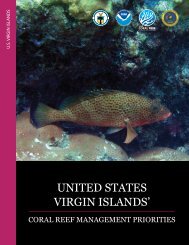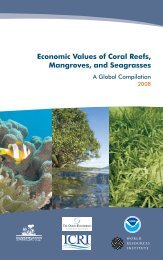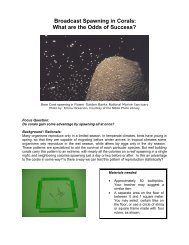Deep-Sea Coral Collection Protocols - NOAA's Coral Reef ...
Deep-Sea Coral Collection Protocols - NOAA's Coral Reef ...
Deep-Sea Coral Collection Protocols - NOAA's Coral Reef ...
- No tags were found...
Create successful ePaper yourself
Turn your PDF publications into a flip-book with our unique Google optimized e-Paper software.
Living specimen photographyLiving specimen photography helps increase our national capacity to document deep-sea coral diversity.The resulting images can be used by subsequent expeditions to identify coral colonies in-situ, reducing theneed to collect new specimens, reducing time and effort for future expeditions, and facilitating broaderscale habitat characterization efforts. The method photo-documents the specimen in-situ with a wideshot, a medium shot, and a close up of the polyps, collects a branch or colony, then reproduces these shotson deck with a scale, and photographs polyps in the wet lab with a microscope. This is a time consumingprocess, but the results are useful. Pictures show Swiftia sp. in the Gulf of Mexico.Fig. 25a. In-situ wide shot. Nearby colonies evident.Fig. 25b. In-situ medium shot. Polyps extended.Fig. 25c. On-deck wide shot on a measured gridFig. 25d. On-deck medium shot. Polyps retractedFig. 25e. Dissecting scope medium shot (10x)Fig. 25f. Dissecting scope close shot (40x)Fig. 25. Example of the sequence of photographs documenting a deep-sea coral. Photographs are taken from thedeep sea (a,b), on the deck of the boat (c,d) and under a microscope (e,f).128


